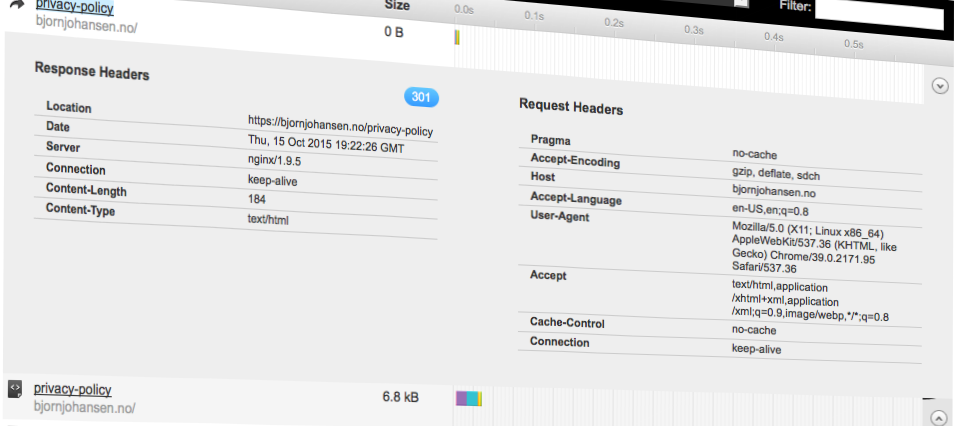With the advent of the fully automated and free of cost certificate authorities Let’s Encrypt and StartCom there is no doubt that the future of CAs are changing.
Tag Archives: ssl
Let’s Encrypt for Nginx
Let’s install an SSL-certificate from Let’s Encrypt for Nginx.
Redirect all HTTP requests to HTTPS with Nginx
All login credentials transferred over plain HTTP can easily be sniffed by an MITM attacker, but is is not enough to encrypt the login forms. If you are visiting plain HTTP pages while logged in, your session can be hijacked, and not even two-factor authentication will protect you. To protect all info sent between your visitors – which includes you – and your web server, we will redirect all requests that are coming over plain HTTP to the HTTPS equivalent.
Continue reading “Redirect all HTTP requests to HTTPS with Nginx”
HTTP Public Key Pinning (HPKP)
Using HTTPS helps preventing someone from snooping your username/password or hijacking your sessions. Using HSTS makes sure the connection stays on HTTPS, even if a MITM tries to redirect you to the plain HTTP version of a web site. But it is easier than you might think for a MITM to use a rogue certificate, making you believe everything is fine. HTTP Public Key Pinning (HPKP) helps the browser check that everything actually is fine.Continue reading “HTTP Public Key Pinning (HPKP)”
Optimizing HTTPS on Nginx
Now that you have secured Nginx with HTTPS and enabled SPDY enabled HTTP/2, it’s time to improve both the security and the performance of the server.Continue reading “Optimizing HTTPS on Nginx”
Enabling SPDY with Nginx
SPDY is this new, cool, fast protocol created by Google that “replaces” HTTP (the first draft of HTTP 2.0 is using SPDY as the working base). It is supported in all the major browsers – yes, even Internet Explorer – with the exception of Apple’s Safari.Continue reading “Enabling SPDY with Nginx”
Securing Nginx with HTTPS
 Adding a certificate and using the HTTPS protocol is a good improvement to the security in the communication between the browser and the server, and should be in place on all sites that have a user login. Contrary to what many (older) guides say, it doesn’t add much load on your server and is fairy easy and cheap to set up right.Continue reading “Securing Nginx with HTTPS”
Adding a certificate and using the HTTPS protocol is a good improvement to the security in the communication between the browser and the server, and should be in place on all sites that have a user login. Contrary to what many (older) guides say, it doesn’t add much load on your server and is fairy easy and cheap to set up right.Continue reading “Securing Nginx with HTTPS”
Caching: Varnish or Nginx?
TL;DR: Varnish lacks support for SSL and SPDY. Nginx handles it just fine, and has very fast cache with either memcache or disk storage (ramdisk). Both can serve stale cache if your backend is down. But Nginx can not write to the memcache storage directly, it has to be done by the application. Also, Nginx can not purge the cache itself, without you compiling your own package.




